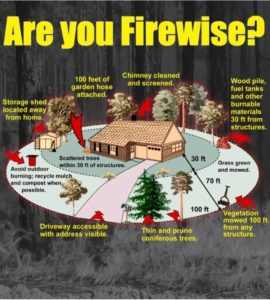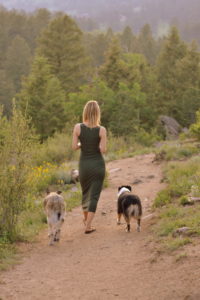
There many ways to green your home, but maybe you don’t have the time and money to implement all of them. If you are short on time and/or money, here are some ways you can improve your energy bills quickly.
Choose Energy Star Appliances
If any of your appliances are more than ten years old, the EPA suggests replacing them with Energy Star appliances. Appliance use comprises about 18% of your homes total energy bill, with the refrigerator using 6% just by itself. (If you still have the old fridge running in the garage, the EPA states that getting rid of it could save you 150 dollars a year!) Energy Star appliances use 10-50% less energy and water than standard models. Energy Star’s website reports that if just one in ten homes used energy-efficient appliances, it would be equivalent to planting 1.7 million new acres of trees.
Control the Temperature
Almost half a home’s energy consumption is due to heating and cooling. Each degree below 68 degrees Fahrenheit during colder weather saves 3 to 5% more heating energy. 78 degrees is recommended for warmer weather. A programmable thermostat will make these changes for you automatically. Also, consider a new furnace. Today’s furnaces are about 25% more efficient than they were in the 1980s. (Also, look for Energy Star furnaces.) Clean your furnaces air filter monthly during the winter. During hot summer months, shade your east and west windows and delay heat-generating activities such as using the dryer until evening.
Save Water
Placing an aerator on your faucets will cut your water consumption by 50%. Install low-flow toilets, which use only 1.6 gallons per flush, compared to 3.5 gallons per flush for pre-1994 models. If your toilet is an older model, adjust your float valve to admit less water into the toilet’s tank. Behavioral changes also add up quickly: using a broom instead of the garden hose to clean your driveway can save 80 gallons of water and turning the water off when you brush your teeth will save 4.5 gallons each time.
Clean Green
This may cost more, unless you choose to make your own household cleaners. However, it’s worth it. I personally have always gotten headaches from using conventional household cleaners. Choosing environmentally friendly cleaning products — and removing toxic ones — goes a long way towards ensuring a home with fresh, clean air. Clean air renews and rejuvenates; it doesn’t pollute our lives or the environment. Living in a less toxic home, removed from neurotoxic chemicals, improves sleep and concentration, makes babies less fussy, and gives a sense of well-being. Your household’s toxic burden on the environment will be significantly reduced by following these steps, and this too can bring peace of mind.
Utilize Energy-Efficient Lighting
According to the Department of Energy, if every American home replaced just one incandescent light bulb with one Energy Star CFL bulb, we would save enough energy to light 3 million homes for year, save 6 million in annual energy costs, and prevent 9 billion pounds of greenhouse gas emissions per year equivalent to those from about 800,000 cars.
LED light bulbs are even more energy-efficient and long-lasting than CFL bulbs, though have been slower to catch on due to cost. But if you think of this way, if you place an LED bulb in your child’s room when your child is an infant, you probably won’t have to change the bulb until your child goes to college.
Use Less Paper
Remove yourself from junk mail lists. Each person will receive almost 560 pieces of junk mail this year, which adds up nationally to 4.5 million ton. About 44% of all junk mail is thrown in the trash, unopened and unread, and ends up in a landfill. To stem the flow into your own home, contact the Direct Marketing Association’s Mail Preference Service at P.O. Box 643, Carmel, NY 10512, or download the online form. Buy unbleached paper. Many paper products, including some made from recycled fibers, are bleached with chlorine. The bleaching process can create harmful byproducts, including dioxins, which accumulate in our air, water and soil over time. Also, carry reusable bags to the store to avoid using paper or plastic store bags.
Choose Green Options for Hardwood Floors
Bamboo is considered an environmentally friendly flooring material due to its high yield and the relatively fast rate at which it replenishes itself. It takes just four to six years for bamboo to mature, compared to 50-100 years for typical hardwoods. Just be sure to look for sources that use formaldehyde-free glues.
If you live in Colorado, an even greener option is beetle-kill pine. If you have been to the mountains in the past few years, you will have noticed an immense amount of trees killed by beetles. This wood is completely usable for flooring and has beautiful grays and blues running through the grain of the wood. Also, you don’t have to worry about the energy costs to ship it from another country; it’s right here.
Reduce plastics
Each year, Americans throw away some 100 billion polyethylene plastic bags — from grocery and trash bags to those ultra-convenient sandwich bags. Unfortunately, plastics are made from petroleum — the processing and burning of which is considered one of the main contributors to global warming, according to the EPA. In addition, sending plastics to the landfill also increases greenhouse gases. Reduce, re-use and recycle your plastics for one of the best ways to combat global warming.
Use Healthier Paint
Conventional paints contain solvents, toxic metals and volatile organic compounds (VOCs) that can cause smog, ozone pollution and indoor air quality problems with negative health effects, according to the EPA. These unhealthy ingredients are released into the air while you’re painting, while the paint dries and even after the paints are completely dry. Opt instead for zero- or low-VOC paint, made by most major paint manufacturers today.
Garden Green
First, use compost instead of synthetic fertilizers. Compost provides a full complement of soil organisms and the balance of nutrients needed to maintain the soil’s well-being without the chemicals of synthetic fertilizers. Healthy soil minimizes weeds and is key to producing healthy plants, which in turn can prevent many pest problems from developing to begin with.
Use native plants as much as possible. Native plants have adapted over time to the local environment and support native animals. They also use less water and require less of your attention.
Stop using chemical pesticides. American households use 80 million pounds of pesticides each year, according to the EPA. These toxic chemicals escape gardens and concentrate in the environment, posing threats to animals and people, especially children.
If you are in Colorado, opt for xeriscaping. A xeriscape promotes creative approaches to water conserving landscapes by helping people improve their landscapes and to reduce the need for water, maintenance and other resources. For most of the western United States, over fifty percent of residential water used is applied to landscape and lawns. Xeriscaping can reduce landscape water use by 60% or more.














